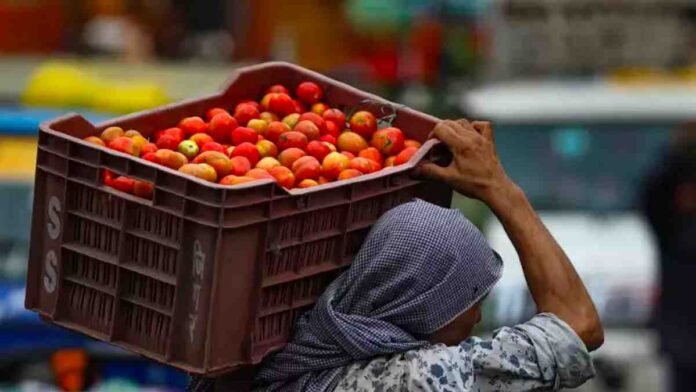Due to heatwaves, monsoons, and floods, tomato prices increased this year. A simplified tomato supply chain can solve this. Increased production of tomato puree and paste can help to absorb excess during boom times and increase output during crises..
Tomatoes evolved in the Andes Mountains at 20 degrees C. The plant still thrives around 20-24 degrees C, decades after leaving its native land. In a geological blink, the tomato replaced the natural tamarind as India’s sourness source.
Tomato prices surge in June-July because it’s the lean season between two huge crops. Tomato prices spiked this year due to climatic issues. A mid-May heatwave hit tomato-growing regions. Tomatoes are fussy about water and temperature, therefore greenhouses yield the most. The plant doesn’t flower, blooms early, or ripens when it’s too hot. The Andean tomato yielded poorly at such heat. In several places of India, the monsoon was delayed, hurting summer crops.
Floods occurred in July. Western disturbances and the monsoon battered Himachal, a major tomato producer in July. Flooding in several locations destroyed crops and prevented exports. In moist conditions, tomatoes decay rapidly, so delay equals loss. The flood and rain raised prices. Kolar market in Karnataka, another July tomato supplier, was watched. My mother lived up near Kolar and describes the tomato-heaven summers there. Kolar failed this year. Why? Climate again. Viruses harm tomatoes too. Ground reports claim tomato yellow leaf curl virus devastated Kolar’s harvest. White flies, which thrive in hot, humid weather with sporadic rainfall, spread this virus, which tomatoes despise. Aphids, which thrive in heat and humidity, may have infected the crop in Maharashtra. A stronger disease transmission network targeted a weak tomato. Unsurprisingly, tomato arrivals in Kolar have dropped 75% in July compared to last year, while Maharashtra and Gujarat have dropped 50%.
Irregular rainfall, heavy rainfall, landslides, heatwaves, and insect attacks—all climate change-related—are likely to increase. Climate change requires adaptation. Other factors—low yield, too many intermediaries, tomato rot, damage and loss between farm and fork—expose tomato production even more to a fickle environment, increasing price volatility. Like startups, streamlining the supply chain would assist. Many are replacing tomatoes with our native, hardier tamarind.
As others have proposed, processing more tomatoes into purees and paste might absorb surplus during booms and improve supplies during dips in output. It matters. In April and May, prices fell due to abundant supply. Farmers were reluctant to grow tomatoes in July or pay more on insecticide and labor to maintain yields. July-tomato output dropped. What if more tomatoes were pureed in April to boost pricing and supplies later? A 2018 RBI-CAB research found that processors provide farmers a greater profit than intermediaries or mandis.
India processes 1% of its tomatoes, significantly less than any other major tomato producer. Processing capacity requires greater and faster private sector support. Compare two startup sectors: Government subsidies, business carbon-reduction efforts, and high gasoline prices are driving electric mobility. But agritech processing is slow. Prioritization is one explanation. India can quickly reach vaccination and toilet goals. Vegetable processing is a crucial climate vaccine that demands action.
Conclusion:-
Due to its resilience to climatic change, Andean tomatoes are Indian cuisine’s favored sourness. Due to climate-related heatwaves, monsoons, and floods, tomato prices spiked this year. White fly-transmitted tomato yellow leaf curl virus contributed to crop failure. The virus damaged the Karnataka market, which supplied July tomatoes.
Irregular rainfall, strong rains, landslides, heatwaves, and insect infestations are predicted to increase. A simplified supply chain and replacing the fussy tomato with the local tamarind can help. Processing more tomatoes into purees and paste can absorb surplus during booms and boost production during dips. Prices plummeted with ample supply, and farmers were afraid to produce or invest more on pesticides and labor.
India processes 1% of its tomatoes, significantly less than any other major tomato producer. Private sector assistance for processing capacity is sluggish. India’s rapid progress on vaccinations and toilets shows the need of prioritization in agritech processes.



